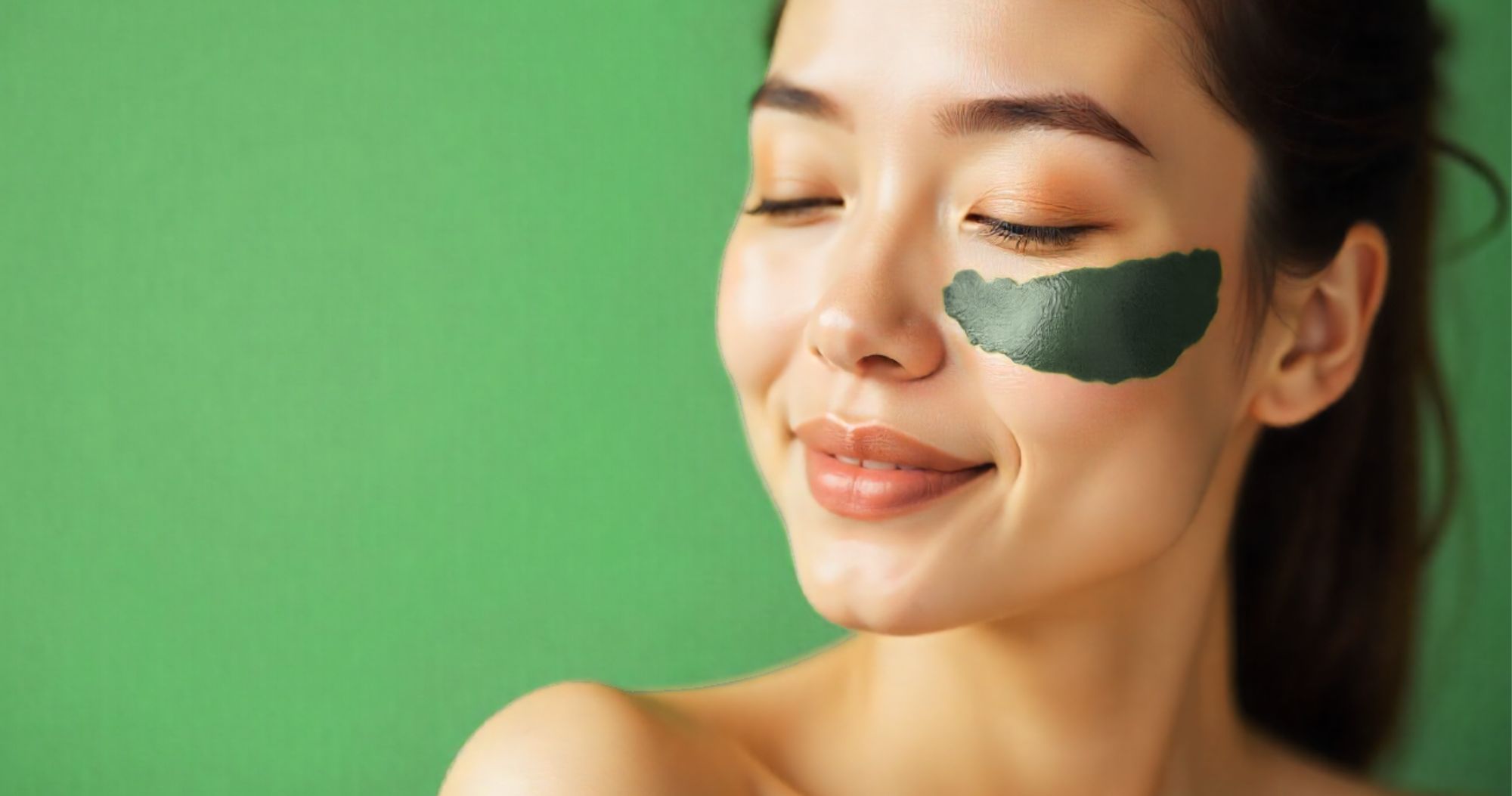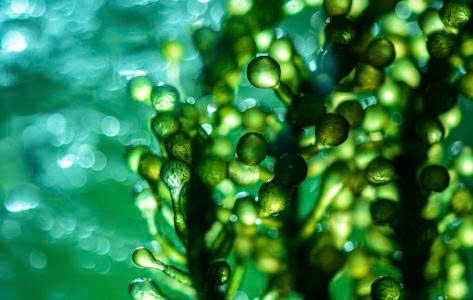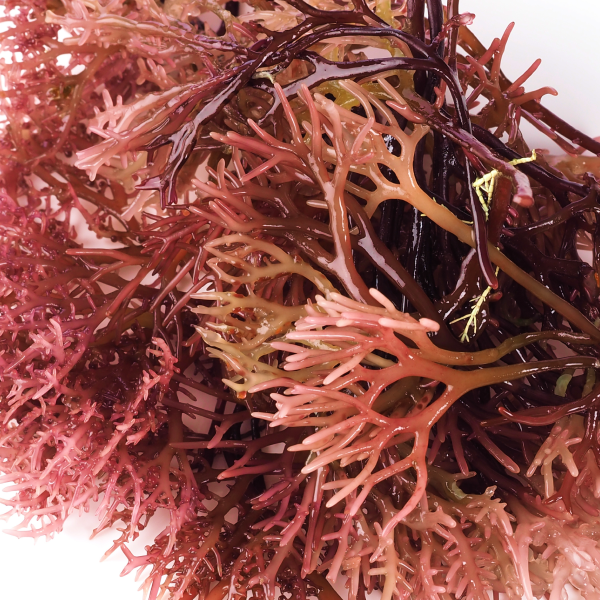
Green algae (Spirulina) and red algae are becoming trends in the health care and beauty industry thanks to outstanding benefits such as scar dimming, skin lightening, antioxidant and resistance enhancement. With a rich composition of nutrients, vitamins, minerals and antioxidants, green algae (Spirulina) and red algae offer an incredible effect in skin regeneration, reducing wrinkles and protecting the skin from UV rays. This article will analyze in detail the uses of green algae and red algae, how to use them effectively, and the important notes when applying.
The green algae, also known as spirulina (Spirulina platensis), is a microalgae belonging to the Cyanobacteria family, which stands out for its ability to photosynthesize and fix nitrogen. Green algae are spring-twisted, contain a high protein content (56-77% dry weight), and vitamins such as B1, B2, B6, B12, E and β-carotene. In addition, green algae are rich in minerals such as iron, calcium, potassium and unsaturated fatty acids such as linoleic acid.

Red algae are a group of nutrient-rich marine algae, containing compounds such as sulfated polysaccharides, carotenoids, peptides, and vitamins A, C. Dubbed a natural “functional food,” red algae not only supports health, but also has skin beauty benefits, especially in dulling scars and improving moisture.

Red algae contain retinol (vitamin A) from β-carotene, which stimulates skin regeneration, especially at the last stage of scar formation. Retinol helps dissolve acne, reduce inflammation and prevent early acne damage, helping scar skin to quickly recover. Green algae also contribute phycocyanin, a powerful antioxidant, reduce inflammation and aid in skin cell regeneration.
Red algae contain carbohydrates that have superior moisture retention, even better than hyaluronic acid, which helps the skin maintain its natural moisture, preventing dryness and flaking. Green algae provide vitamins C and E, which help to lighten the skin, reduce darkening and improve uneven pigmentation. Both types of algae help to even out skin tone and give the skin a radiant glow.
Red algae stimulates collagen production through peptides, improves elasticity and reduces wrinkles when used regularly 3 times a week for 24 weeks. Green algae, with β-carotene and vitamin E, slow down cell aging, making the skin softer and more supple. Both types of algae have antioxidant properties, protecting the skin from the harmful effects of free radicals.
Red algae contain sulfated polysaccharides and carotenoids, which protect the skin from UV rays, minimize cell damage and prevent premature aging. Green algae also supports skin detoxification, enhances antioxidant capacity, keeping the skin healthy from the effects of the environment.

Both green algae and red algae have anti-inflammatory properties. Phycocyanins in green algae help neutralize free radicals, reduce redness and inflammation of the skin. Red algae, with retinol and carotenoids, inhibit the formation of acne and reduce diffuse dermatitis.
Green algae contain nutrients such as protein, vitamins and minerals, which strengthen the immune system, especially in older adults. Red algae, with electrolytes such as potassium and sodium, support water balance in the body, promoting hydration.
Fucoxanthin in red algae has the ability to reduce the size of skin cells affected by UVB rays, reducing the risk of skin cancer. Green algae have also shown anti-cancer potential through animal studies, helping to limit tumor growth.
Green algae: The recommended dosage is 2-3g/day, can be taken in tablets or powder mixed with juices and smoothies to reduce bitterness.
Red algae: Often found in dietary supplements or cosmetics, it is recommended to consult a doctor before supplementing.
Red algae: Use a nourishing cream or mask containing red algae extract to dull scars, moisturize and protect the skin.
Green algae: Green algae powder can be used as a mask, combined with honey or yogurt to lighten the skin and reduce acne.
Green algae and red algae both offer tremendous health and beauty benefits, but each has its own characteristics. In terms of composition, green algae stand out for their high protein content (56-77% dry weight), vitamins of group B, E, β-carotene and phycocyanins, which help with antioxidant and increased resistance. Meanwhile, red algae contain sulfated polysaccharides, carotenoids, retinol and vitamin C, which focus on moisturizing and stimulating collagen production.
Regarding its uses, green algae is known for its ability to strengthen the immune system, brighten the skin and aid in the fight against cancer through animal studies. Red algae excel at smoothing scars, reducing wrinkles and protecting the skin from UV rays thanks to compounds such as fucoxanthin and peptides. In terms of application, green algae often appear in dietary supplements and natural masks, while red algae are common in cosmetic products such as nourishing creams or anti-aging serums. In terms of dosage, green algae have specific recommendations of 2-3g/day, while red algae need to follow the instructions of the specific product.
Green algae and red algae are widely used in skin care products such as nourishing creams, masks, serums and functional foods. Well-known cosmetic brands often integrate red algae extract in anti-aging creams, moisturizers, while green algae are popular in nutritional supplements and natural masks. For optimal effect, combine oral and topical use of algae, while maintaining a healthy diet and protecting the skin from the sun.
Green algae and red algae are two “superfoods” that offer many health and beauty benefits. From their ability to dull scars, brighten skin, anti-aging to boost resistance, both algae are great choices for those who want natural and sustainable skin care. Choose a reputable product, use it properly and consult with a specialist for optimal effect. Discover now the products containing green algae and red algae at the homepage to start your skincare journey!